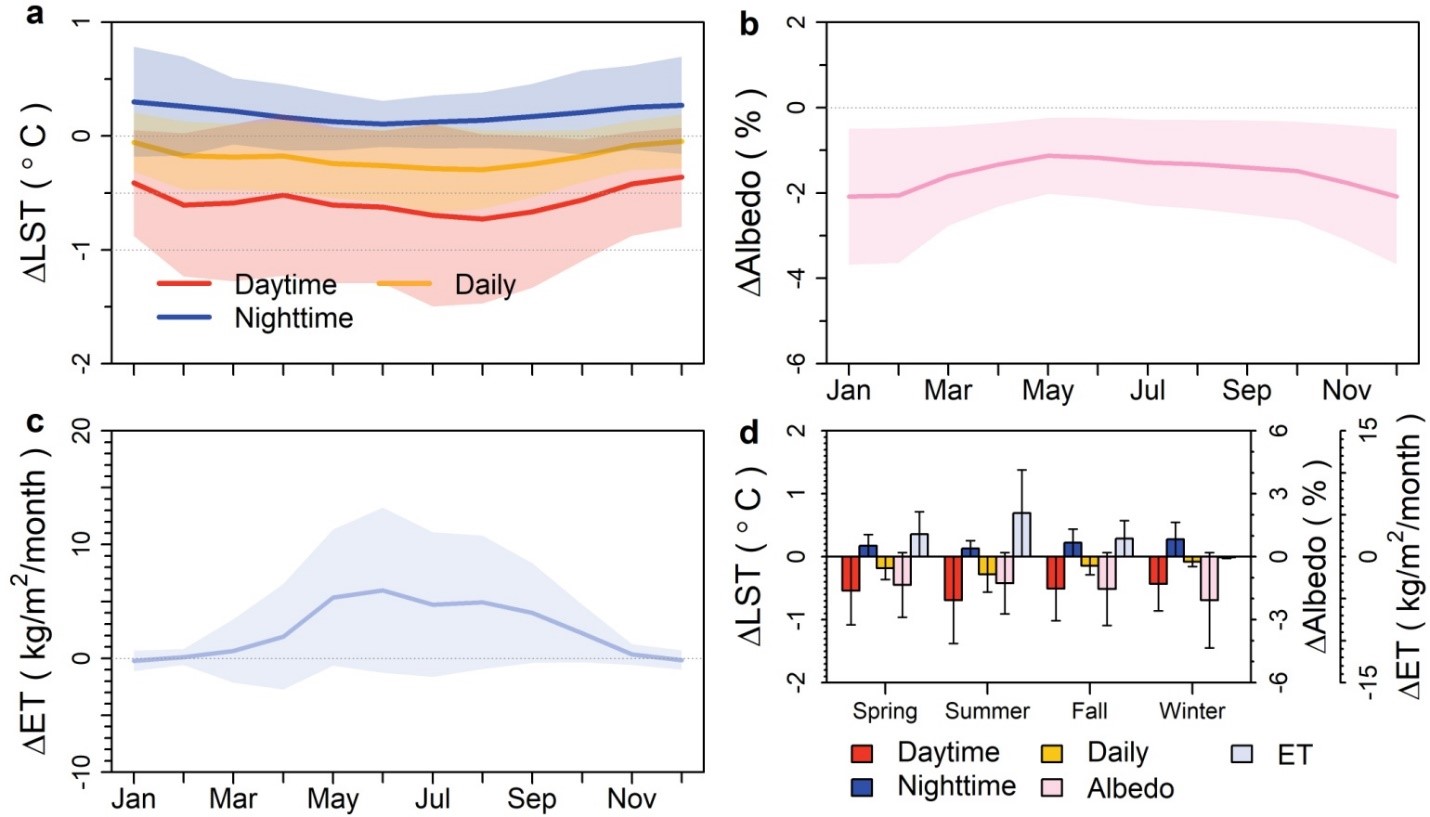
Juniper Woody Plant Encroachment into Grasslands Impacts Local Climate
EPSCoR Update - Aug. 2021
Juniper is a conifer woody species that commonly encroaches the native grasslands and shrublands in the Great Plains. Woody plant encroachment (WPE) into grasslands is a result of passive land management, changing climate, and human activities, and has significant impacts on the socio-economic and ecological systems. WPE may have negative effects on water availability, forage for livestock, and risk of wildfire. WPE can also affect the local and regional climate by altering the exchange of mass and energy between the land surface and the atmosphere. The lack of studies on how WPE affects local climate hinders our understanding of the interactions between climate and the changes in the vegetation cover.
Hence, Dr. Xiangming Xiao from the University of Oklahoma’s Department of Microbiology and Plant Biology led a team of graduate students, post-doctoral researchers, and research scientists (Jie Wang, Jeffrey Basara, Xiaocui Wu, Rajen Bajgan, Yuanwei Qin, Russell Doughty, and Berrien Moore III) to determine the impacts of Juniper woody plant encroachment (JWPE) on the local land surface temperature (LST), albedo, and evapotranspiration (ET) within the grasslands in Oklahoma based on satellite observations.
The research team used phenology-based algorithm, microwave images (Phased Array type L-band Synthetic Aperture Radar, PALSAR) and optical images (Landsat) to generate the 30-m juniper forest encroachment maps for Oklahoma. The resultant maps were used to quantify spatial-temporal changes of juniper forest encroachment during 2000-2015.
“We analyzed the differences in LST, albedo, and ET between juniper encroached grasslands and adjacent pure grasslands at annual and seasonal scales using 16 years of remote sensing data," Xiao said. “We also characterized the relationships between differences in LST, albedo, and ET and the proportion encroached by Juniper in landscapes and examined how the effects of JWPE on local climate vary with different hydrological years (dry, normal, pluvial years).”
“We found that JWPE into grasslands reduced daytime LST and albedo, but increased nighttime LST and ET from an annual scale analysis,” Xiao said. “Our results showed that JWPE significantly affected the local climate. With one percent increase in Juniper cover, there was an average annual daytime cooling of about 0.026oC and nighttime warming of about 0.01oC. Increasing Juniper cover leads to a decrease in Dalbedo at about 0.053% and an increase in DET at about 1.3 mm/year,” Xiao added.
The research team suggested that JWPE into grasslands cools the local land surface in the daytime but warms the grasslands in the nighttime significantly. Moreover, JWPE’s effect on the local climate were found to be stronger in dry years than in normal and pluvial years. These results have demonstrated the potential of satellite technologies and Big Earth Observation Data to better understand the WPE and its impacts on local climate. The effects of the observed local climate in the JWPE on animals (e.g., birds, small and large mammals) and ticks are not known, yet, and therefore, more research is needed, as it could have large implications on tick dynamics and tick-borne diseases in Oklahoma.

Image/Above: Seasonal dynamics of a) Land Surface Temperature, b) Albedo, c) Evapotranspiration, and summary of DLST, DAlbedo, and DET (represents the difference of each variable between juniper-encroach grasslands and adjacent pure grasslands during 2000-2015.
More information can be found in the following publication: https://doi.org/10.1016/j.agrformet.2021.108508
___________________
Funding for this project was provided in part by USDA NIFA (2013-69002 and 2016-68002-24967) and NSF EPSCoR project (grant nos. IIA-1301789, IIA-1920946, and OIA-1946093).
